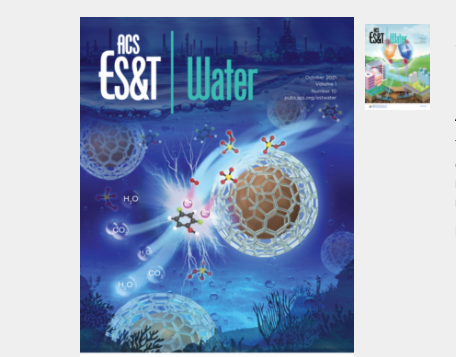
Hi all…a paper on nanoparticles has just appeared in the journal ACS EST Water. It provides baseline concentrations and sizes for typical occurrence of natural and anthropogenic (manufactured) nanoparticles (NPs) including gold, cerium, titanium, and palladium (Au, Ce, Ti, and Pd) in US drinking water sources.
The authors conclude that “NP size distributions of these surface water samples could rarely be described adequately with log-normal curve fitting, in contradiction to the common expectation that particle size is lognormally distributed in nature. There was no apparent geography-based difference, or trend, in distributions of NP sizes found in all the samples. A great amount of temporal variability was observed, suggesting that flow conditions, precipitation, and point-source release events may strongly impact NP concentrations on the day of sampling. This supports the hypothesis that [engineered nanoparticles] ENP hot spots may occur at different points in time depending on local sources and release factors. This study provides baseline concentrations and sizes for typical occurrence of natural and anthropogenic NPs (Au, Ce, Ti, and Pd) in drinking water sources on a regional geographic scale. As the usage of these elements in nanomaterials increases, monitoring their levels and fluctuations will assist in environmental and human health risk assessment.”
Prior to reading this, I didn’t stop to consider that “naturally” present nanoparticles can potentially complicate source tracking and other studies. The authors reported that of the elements examined, Ti has the highest natural abundance, followed by Ce, then Au, and Pd.
Bill
_________________________________________________
Quantifying Nanoparticle Associated Ti, Ce, Au, and Pd Occurrence in 35 U.S. Surface Waters
https://doi.org/10.1021/acsestwater.1c00206 ACS EST Water XXXX, XXX, XXX−XXX
Logan N. Rand, Kenneth Flores, Naushita Sharma, Jorge Gardea-Torresdey, and Paul Westerhoff
ABSTRACT
“Mass flux models have predicted environmental concentrations of released engineered nanoparticles (ENPs), but their validation with field studies at high geographic scale has been limited. Additionally, baseline levels of natural and incidental nanoparticle (NP) occurrence are not well-established. This study begins to address these knowledge gaps by investigating the Au, Ce, Ti, and Pd NP content of 241 water samples from 35 drinking water sources across the U.S. over 6–9 monthsusing single particle inductively coupled plasma-mass spectrometry. Ce and Ti NPs were commonly detected, with Ce concentrations (0.3–230 μg L–1) exceeding both ENP predictions and reports of natural abundance. The Ti NP concentrations (3–2,400 μg L–1) were greater than modeled ENP release and similar to the expected natural abundance. Although Au and Pd NPs were rarely detected, they were present at parts per billion levels in some samples. The NP concentrations and sizes did not differ between geographic regions but were highly variable at individual sites over time, suggesting that local changes to release rates and precipitation may cause temporary hot spots. The regional NP concentrations and sizes provided here will be useful to inform continued ENP release and risk assessment studies.”





